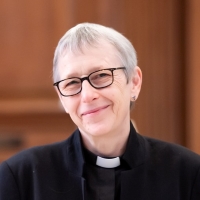It was 10th June 1991, at twenty to six in the morning, and there I was in the delivery suite of Birmingham Maternity Hospital, having managed to survive one of womankind’s great traumatic experiences. I was in a rather dazed state of extreme sleep-deprivation, but rejoicing in the safe delivery of a healthy girl. And a hospital porter appeared in the doorway to transfer me and my new baby daughter up to the ward.
As he arrived, I looked up and saw his face, and without a moment’s hesitation said, in utter incredulity: ‘Michael!’ Somewhat taken aback, the hospital porter was clearly baffled that I knew his name. ‘Michael Tingley’, I said – ‘You went to Halsford Park Primary School in East Grinstead!’ At which point his faced changed from the bemused to the utterly gobsmacked. ‘How on earth did you know that?’, he replied, intrigued.
And the answer was that Michael and I had been in the same class at Primary School in Sussex between the ages of four and eleven. I hadn’t seen him, or even given him a second thought since the summer of 1970, when he and I had headed off for different secondary schools. But suddenly there he was in front of me, more than two decades later – and despite my dazed and semi-anaesthetized post-natal state, particularly at that ungodly hour of the morning – and despite the fact that he was now about two feet taller than when I had last seen him, was wearing long trousers, had a stud in one ear, and was working as a hospital porter in Birmingham, I knew immediately and without any doubt whatsoever that it was him.
A second story. I once switched on my car radio in the middle of a news interview on Radio 4 with an unnamed person. Before I had even had time to grasp the topic that was under discussion, let alone the identities of any of the participants, I instantly recognized the voice of one of the women who was being interviewed. Thirty years earlier, she had been on the staff of a church that I attended when I was a student. I had neither seen nor heard from her at all at any point since then. And yet, despite those long years of complete separation, the minute I heard her voice, I knew without any shadow of a doubt that it was her. As indeed it was.
How on earth was it possible for me to recognize a single individual human voice out of all the millions that it could have been, completely out of context and in a radio broadcast – it was not even ‘live’ – after a gap of thirty years. And how could I have done that without being given any clues at all to her identity? Similarly, how on earth was it possible for me to recognize instantly a boy from my primary school days under the most bizarre and unexpected of circumstances, decades after we had last met?
Recognition is such a strange human phenomenon: it is mysterious, and subtle and elusive. What is it that enables us to recognize a face, or even a voice, from long ago and to know without any hesitation the identity of whom it is that we are encountering? It is a bit like spotting family resemblances in the expressions or the gestures of a young child: glimpses of recognition that can be so fleeting that they are almost impossible to identify or to describe, but which are no less real for all that.
In the Christmas story familiar to us all, the shepherds are directed to the birth of the Messiah at Bethlehem by an angelic messenger; the wise men are led to the Christ child by a star. But in the story that we celebrate today, the Presentation of Christ in the Temple – sometimes called Candlemas – the aged Simeon, without the assistance of any kind of divine guidance or intervention whatsoever, sees the child Jesus before him, and recognizes, instantly, and without any doubt whatsoever, the true identity of that child.
So what was it that he recognized? What was it that enabled Simeon to know instantaneously, and without any shadow of a doubt, that this child was indeed the long-awaited Messiah? I suspect that Simeon himself might have struggled to put an answer into words. Which does not, of course, mean that it is any the less authentic – just as our inability to pin down a fleeting family resemblance does not make that any less real either. And I wonder where those moments have been in our own lives when, like Simeon, we have suddenly and unexpectedly glimpsed something that was undoubtedly and unquestionably of God – and whether we had the confidence to name it for what it was? I wonder.
But there is more. Because Simeon does not simply recognize the child before him as the promised Messiah. He discerns something else as well, about that child’s true destiny. He takes Jesus into his arms and praises God, proclaiming him to be the promised Saviour of all: the light to lighten the Gentiles as well as the glory of God’s people, Israel. But there is another aspect to that destiny which is far less comforting and comfortable. Which is why he then turns his attention to Mary and declares:
‘This child is destined for the falling and rising of many in Israel, and for a sign that will be spoken against (and a sword will pierce through your own soul also) that thoughts out of many hearts will be revealed.’
What Simeon is able to recognize is that this is a child whose coming brings with it judgment – this is a child whose presence will bring to light the truth of what is written in every human heart: our self-serving priorities, our pride and our failure to love – truths that none of us like to be exposed. For some that will generate resentment, even hatred: and the price of their resentment will be paid, first and foremost by the Saviour himself; but also by the one who loved him more than any other: hence Simeon warns Mary that ‘a sword will pierce your own soul, too.’
The greatest joy in human life is the gift of love: but genuine loving is costly. It makes us vulnerable, because loving someone brings with it not only the risk of rejection and hurt, but also the risk of loss; and the deeper our loving, the greater the pain.
Candlemas marks the point at which we finally draw to a close our celebration of Christmas and Epiphany, and turn our faces towards Lent, which begins on Ash Wednesday, which this year falls on 2nd March. The season of Lent – if we are prepared to take it seriously – can be difficult and demanding, but it can also be part of the most extraordinary and profound spiritual experiences within Christian tradition. Because the journey that begins there, in the wilderness of Lent, will lead us also through the dramatic events of Passiontide and the devastation of Good Friday; through the desolation of Holy Saturday to the astonishing reality and revelation and transformation of Easter Day, and the gift of new life and new hope that is ours, having passed from death to life. Because you cannot have a resurrection without first having a death. And it is a journey that, each year, we are invited to make our own.
Thanks be to God for a love that is as powerful and as wonderful and astonishing as that. And it is a gift that is there waiting for us to receive it. All we need to do is to recognize our need of it, open our hands, and be ready to set out on that amazing journey of discovery and revelation.
Amen.



